#Lodgepole chipmunk
Text










Earthquake Fault, Mammoth Lakes (No. 1)
The Lodgepole chipmunk (Neotamias speciosus) is a species of rodent in the family Sciuridae. It is found in the U.S. state of California at elevations from 1,500 to 3,000 metres (4,900 to 9,800 ft). The Lodgepole chipmunk has a variety of common names including: Tahoe chipmunk, Sequoia chipmunk, Mt. Pinos chipmunk, and San Bernardino chipmunk.
The Lodgepole chipmunk spans from the high Sierra Nevada, San Jacinto, San Bernardino, and San Gabriel Mountain ranges of California into the Lake Tahoe region of the west central corner of Nevada. This species lives in subalpine coniferous forests made primarily of several species of pines (Lodgepole, Jeffrey, Ponderosa, and Sugar) and firs (Douglas, white and red). They can be observed foraging around and on top of rocks and fallen logs, which make up the forest floor.
Several different vocalizations are used by the Lodgepole chipmunk during both courtship and when frightened by a predator. During courtship, visual displays can be shown through the action of tail flipping and body postures of both sexes. Alongside visual displays, during courtship males and females utilize chips and whistles. When frightened or alerting others, the Lodgepole chipmunk produces a high pitched "whisk", a shrill "tsew", as well as the series "pst-pst-pst-a-ku" in a rapid and repeated manner. After caching food throughout the spring and summer months, hibernation begins at the end of October and lasts until early to mid April, a five-six month span.
The Lodgepole chipmunk is an omnivore, feeding on both animal (mammals, birds, bird eggs, small invertebrates arthropods, and insects) and plant matter (leaves, flowers, pollen, fungi, and seeds). Like most rodents, this chipmunk engages in the foraging behavior of caching and storing food in order to survive the long winter hibernation. Through its diet, this chipmunk ingests seeds, which may not be completely broken down through the digestive process, and then defecated and dispersed throughout its habitat. Similarly, the Lodgepole chipmunk also disperses ectomycorrhizal fungi. This kind of fungi is important to forests, allowing for trees to subsist by increasing their water and nutrient gains. By dispersing spores, seeds, and pollen, the Lodgepole chipmunk plays an important role in the maintenance of the forest and mountain ecosystem.
Source: Wikipedia
#Lodgepole chipmunk#Earthquake Fault#Mono County#geology#animal#wildlife#flora#fauna#North Landing#California#summer 2022#travel#original photography#vacation#tourist attraction#landmark#landscape#countryside#USA#Sierra Nevada#nature#forest#woods#fir#pine#rocks
4 notes
·
View notes
Text
I miss going to the sierras and seeing this guy

Lodgepole chipmunks are like marmots, just absolutely unafraid to come right into your camp and ask for food, or take it the minute you weren't looking. So funny to see this little thief scampering away, tail bouncing with a whole cheetoh in its mouth
2 notes
·
View notes
Photo

The Lodgepole chipmunk is found in higher elevations of California. I spotted this guy in Sequoia. During courtship, visual displays can be shown through the action of tail flipping and body postures along with vocal chips and whistles. If frightened, they produce a high pitched shrill in a rapid and repeated manner. They store food throughout spring and summer and hibernate from the end of October until April. #lodgepole #chipmunk #rodent #sequoia #nationalpark #animal #nps #striped #cute #afewinterestingfacts #woods #forest #california #outdoors #nature #sequoianationalpark #sequoianationalforest #roadtrip #travel #wildlife (at Sequoia National Park) https://www.instagram.com/p/CEtxjQVB58I/?igshid=72nnc1rjdjev
#lodgepole#chipmunk#rodent#sequoia#nationalpark#animal#nps#striped#cute#afewinterestingfacts#woods#forest#california#outdoors#nature#sequoianationalpark#sequoianationalforest#roadtrip#travel#wildlife
0 notes
Text
Lost
a MacRiley drabble
@littlelily80 here ya go, love
Prompt: Mac gets sick, and Riley has to take care of him.
For continuity purposes, this takes place post-R+S+U!
*****
At least we’re lost in our own country was not as reassuring as Mac’s tone suggested, eight hours into a manhunt in a remote part of the Rockies. Riley trudged along behind him, side-stepping rocks and fallen branches.
Her body begged for water, but they only had one water bottle left, and even if Mac could make a DIY filter, there wasn’t running water for miles. The little sips she took did nothing to ease her pounding headache. Judging by the way Mac rubbed his temples, he wasn’t any better off.
After he tripped over a third tree root in five minutes, Riley started to worry. “You good, Mac?”
“Huh?” He turned around, chest heaving as he gulped down shallow breaths. That wasn’t good. “Yeah, I’m fine.”
I’m fine, my ass, Riley thought. “You don’t look fine.” She sounded like Matty.
“It’s just the altitude catching up to me.” He resumed walking.
Altitude sickness. Perfect.
“Why don’t we take a break?” she suggested, hoping he wouldn’t be stubborn for once in his life.
“If we stop then we’ll lose Marco’s trail.”
“We lost his trail hours ago! Admit it!” She knew Mac would do no such thing. Riley could hear his breathing now, coming in short, hard pants. Time for Plan B. “You look how I feel,” she muttered, just loud enough for Mac to hear. She felt bad manipulating him, but desperate times called for desperate measures.
Mac skidded to a stop. “On second thought, we can afford a quick break.”
Riley fought to hide her smirk. Mission accomplished.
She let Mac lead her to a wide, flat boulder in the shade of a nearby lodgepole pine. They sat shoulder to shoulder, leaning on each other just as much as the tree behind them. A chipmunk sniffed Riley’s boot, unfazed by their intrusion in its home.
“You’ve, uh, got a friend there,” Mac belatedly pointed out.
“That’s Alvin.” She rested her head on his shoulder after earning a chuckle from Mac.
Riley didn’t know how long they sat in comfortable silence, trying to catch their breath, when the sat phone rang. Mac scrambled to pull it out of his pack.
“Yeah?” Mac answered. Riley snorted. So eloquent.
Bozer’s voice screeched through the speaker. “We’ve got Marco. He stopped at this convenience store in the middle of nowhere. Sending exfil to you now.” He hung up.
Riley and Mac just stared at each other for a second before cracking up. “Great,” she snarked. “So we hiked all those miles for nothing!” Mac shrugged.
Despite her desperation to get out of the thin air, exfil arrived entirely too soon for Riley’s liking. She could’ve spent hours beside Mac, basking in the feeling of being lost in the middle of nowhere. If he didn’t feel like shit, she knew Mac would’ve felt the same.
Half carrying him to the chopper, she asked, “Still want to go camping this weekend?”
His wicked grin was all the answer she needed.
#beth writes#macgyver#macriley#drabble#if you send me prompts i'll write more drabbles#macgyver fanfiction
47 notes
·
View notes
Photo










Friday May 28 | Sequoia National Park | Congress Trail
The other advantage of our Lodgepole campground was that it was very close to the groves of giant sequoias that attract tourists from all over, and where we planned to start our morning hike. Since we started our day early and were already nearby, we had no trouble finding parking at the General Sherman Tree Car Park and from there hit the paved, very accessible trail into the woods, immediately greeted by a few bashful deer on the trail. Other wildlife sightings that day included woodpeckers, chipmunks, and lizards. Getting an early morning start was the way to go. There were few people near the famous General Sherman Tree, the world’s largest tree by volume, and we got to take photos by it and enjoy the massive monarch sequoias in this grove in relative peace before the crowds arrived. In contrast, the area was completely flooded with throngs of tourists later in the afternoon when we walked back through to return to our car. While the General Sherman Tree and Congress trail areas were crowded, that area is only a blip on the map and it seems that most tourists stop by the groves for a short walk around the trees rather than a hike, so as soon as we were on more natural trails we had no issues.
I have a hard time doing justice to the sequoias with words or a camera. It is hard to appreciate the scale of how large these hulking giants are even after standing beside and inside them, taking wide angle photos or trying to use Stephen for scale. They are magnificent. I enjoyed learning about their life cycle, and that part of their natural lifecycle is fire - which helps to open up their fallen pine cones to allow the seeds to grow, and also clears the surrounding forest of competing trees that would otherwise shade the seedlings out.
0 notes
Photo

Derp in the Sierra... meet Derp in the Sierra! 🐿 So here’s how a name was born: Driving up to @vermilion_valley_resort last week, my oldest daughter sent a text and I replied that we were driving to VVR. I noted we would soon be “Derp in the Sierra.” Auto-correct in action. Now it happens that my youngest, who was with me, uses “derpy” as an adjective to describe something with a goofy, nerdy nature. So I didn’t fix it, since it was one of those serendipitous accidents that end up birthing something new. Flash forward to the next morning and an abundance of Lodgepole Chipmunks arrived to pay tribute (and steal Peanut M&M’s... they went directly to the good stuff). We were going to name them individually, but there were way too many. So a decision was made: the chipmunks and the similarly appearing Golden-mantled Squirrels were all named Derp in the Sierra. All lead by a much larger solo ground squirrel (Mr. Chubbs). He made his entry the next day and entertained us and an audience of Derps in the Sierra as he broke into our neighbor’s unattended trash bag. . The End. 😸 (at Vermillion Valley Resort) https://www.instagram.com/p/CD767cIjNJMnCrPqqdJJU-QcSuhnQA9EhOyP_o0/?igshid=hj7x3dmnlcu4
0 notes
Text
10 rules for picking the perfect campsite
New Post has been published on https://nexcraft.co/10-rules-for-picking-the-perfect-campsite/
10 rules for picking the perfect campsite
This story was originally published by Field & Stream.
There are numerous considerations to bear in mind when choosing the perfect campsite. (Nathaniel Welch/)
It’s late. Your shoulders are tired from carrying a pack, or your ass is tired from driving on rutted roads, and all you want is to find a camping spot and stay. But before you commit to the first place that suggests it could house a tent, there are a couple of questions you’ll want to ask yourself:
Am I a late sleeper? Do I want to watch the sunrise? Are there bears around? Do I want an Instagram-worthy spot without being that guy that pitched his tent on a wind-swept ledge?
The good news is, you can have beauty, comfort, and safety, but you’ll have to be willing to work for it. Next time you pull up to a campsite for the night, either in your truck or on your own two feet, think of these 10 ways to maximize your comfort and minimize the danger.
1. Plan for the sun
Area maps can help you both find an ideal location and help situate basecamp according to such factors as predominant wind direction, sunrise, sunset, and, of course, distance to the best fishing hole. (Nathaniel Welch/)
Most of us are either morning people or night owls. Depending on what you prefer, or what you want for this particular night, think about how much—or little—sun will be on your tent in the morning. If you plan to sleep until 9 a.m., choose a spot deeper in the woods where the sun won’t crest the horizon and immediately heat up your tent.
2. Anticipate storms
Bad weather is almost inevitable on any prolonged camping trip. Avoid campsites amid tall trees or in depressions where water can inundate your basecamp. (Nathaniel Welch/)
“Just as in fishing, think about seams,” says Marco Johnson, senior faculty for the National Outdoor Leadership School (NOLS). Fish will choose places that are calm enough to relax but close enough to the fast water to catch food as it passes by. The same goes for avoiding bad weather at a campsite. Find a place that’s protected from the wind by a boulder, a small group of shrubs, or along the edge of trees. Then you can have the vistas over meadows and peaks for your pictures but remain protected from any sudden storms. Beware of sleeping in depressions that could fill with rainwater or under the tallest trees in the forest that will, one day, catch a bolt of lightning.
3. Avoid bugs
Situating your camp kitchen in somewhat windier locations will help you avoid insects. (Nathaniel Welch/)
Whether it’s horseflies, deer flies, mosquitoes, or white socks, most places you’re camping will likely have at least one kind of pesky biting insect. Fortunately, you can be a little proactive. If you’re in an area known for bugs, choose a campsite farthest away from mosquito-breeding standing water. You may also have to decide between being more exposed and deal with wind or in the trees, fighting the bugs. One option is to cook and eat in a windier area and leave the buggy, protected spots for when you’re in your tent.
4. Check the trees
Pitching your tent away from dead or dying trees is a must. (Nathaniel Welch/)
As important as it is to look down for the best tent spot, it’s maybe more important to look up. Widowmakers got the moniker for a reason: They kill people. When you are choosing a spot, make sure to scan not only right next to your tent, but also a large enough perimeter that if a dead lodgepole pine or some other large tree topples, it won’t smash you in your sleep.
5. Count on critters
Game trails are great for accessing high-country lakes, but make for poor campsites. (Nathaniel Welch/)
Don’t put your tent on a game trail. While a deer passing through might be nice, the grizzly or black bear following it will be less nice. Also, remember to follow standard regulations for food storage and cooking in bear country. Scan for trees suitable to hang food, and keep anything edible out of and away from your tent. Keeping a clean camp isn’t just because of bears. Many chipmunks and squirrels have become so used to people dropping food or outright feeding them that they will brazenly chew through your food bag or slip in a vehicle door left ajar.
6. Stay away from the stench
Sure, being near the outhouse in a campground can be convenient when you drink too much water before bed. But often those close spots are also the rankest. The same goes for dumpsters. Check where the bathrooms and garbage cans are when you arrive, and position yourself a far enough distance that you won’t wake up in the night with a stench in your nose that won’t go away.
7. Know your gear
There’s no excuse for gear failure. A backyard dress rehearsal set up can help you avoid heartache once you hit the woods. (Nathaniel Welch/)
This isn’t exactly a tip for choosing the right spot, but it’s critical to understand how and where to use your camping gear. “You should be comfortable in your ability to put up a shelter that’s not going anywhere,” Johnson says. In other words, it’s important to be able to trust your gear before setting up camp for the first time in the woods. Practice using it and familiarize yourself with your equipment.
8. Choose a level spot
Sometimes the most obvious camping rules are the most ignored. Level ground makes for the most comfortable campsite. (Nathaniel Welch/)
This seems like a basic one—until you don’t do it. Finding a spot that’s level and positioning yourself in the best way in the tent is the difference between a good night’s sleep and waking with a permanent headache because blood rushed to your brain all night. It’s also what keeps you from rolling on top of your tent mate, who might never want to be your tent mate again. And while you’re checking, scan for rocks and roots.
9. Look for nature’s toys
If you’re camping with kids, be sure it’s in an area in which there will be opportunity to explore. (Nathaniel Welch/)
If you’re traveling with kids, the best campsite is the one with the most opportunities for playing, climbing, and fishing. Leave normal games and activities at home and opt for a campsite with boulders or downed logs they can climb on and around. Bonus points for spots near creeks, lakes, and ponds.
10. Leave no trace
Always be certain to leave your campsite in impeccable condition. (Nathaniel Welch/)
Just because a campsite could be perfect if you rearranged the rocks, logs, and other features doesn’t mean you should. “Good campsites are found, not made,” says Johnson. If you’re in a campground, use designated fire rings and clean up after yourself. If you’re in the backcountry, look for spots that have already been used. Pay attention to fire restrictions, and if you build a campfire ring, disassemble it before you leave.
Written By By Christine Peterson/Field & Stream
0 notes
Photo

A Mount Pinos lodgepole chipmunk (Tamias speciosus callipeplus); getting ready for a big jump! 🐿 #mtpinos #mountpinos #mtpinosfrazierpark #mountains #wilderness #hikingadventures #hiking #naturephotography #photography #frazierpark #lospadresnationalforest #calforniadreaming #camping #chipmunk #chipmunks #lodgepolechipmunk #wildlife_perfection #wildlifephotography #wildlife #wildlife_seekers #wildlifeplanet #californiawildlife #🐿 (at Los Padres National Forest)
#chipmunks#wildlife_perfection#mtpinos#lodgepolechipmunk#camping#wildlifephotography#🐿#photography#hikingadventures#hiking#wilderness#lospadresnationalforest#mountpinos#chipmunk#mountains#wildlife_seekers#calforniadreaming#naturephotography#californiawildlife#frazierpark#wildlifeplanet#wildlife#mtpinosfrazierpark
0 notes
Video
instagram
Sequoia National Park offers an abundance of wildlife. The most thrilling experience was seeing a black bear walking through the forest; and the funniest would have to be watching these little Lodgepole chipmunks zipping around almost everywhere you look. This vid gives a little glimpse into my experience of Wild Sequoia. Enjoy 🐿 . . . . . @sequoiakingsnps @nationalparkservice @lonelyplanet @natgeoadventure #mcventurer #sequoianationalpark #wildsequoia #wildlife #wildlifevideo #nationalpark #blackbear #blackbearvideo #lodgepolechipmunk #deer #intothewild #intothewoods #roadtrip #adventurer #adventure #adventuretravel #lonelyplanet #natgeowild #natgeoadventure #sierranevada #california #usa #trekking #instaadventure #instatravel #sequoiatrees #video #nature #naturevideo (at Sequoia National Park, California)
#california#nature#wildsequoia#sequoianationalpark#usa#nationalpark#sequoiatrees#natgeowild#mcventurer#blackbear#instaadventure#blackbearvideo#trekking#lodgepolechipmunk#lonelyplanet#deer#wildlifevideo#naturevideo#adventurer#intothewild#roadtrip#video#adventuretravel#wildlife#sierranevada#instatravel#natgeoadventure#adventure#intothewoods
0 notes
Photo

Ten best hikes in Alberta
DON’T BE ONE OF THOSE tourists who sees a province through a car’s windshield. The best way to explore Alberta’s landscape is on two feet. From short, easy walks around blue-green lakes to demanding treks up muddy paths, these hikes have the best eye-candy the province can offer.
Crypt Lake – Waterton Lakes National Park
This popular six-hour hike near the Canada- U.S. border starts with a 10-minute boat ride across Waterton Lake. Once on dry land you’ll travel up switchbacks as you graduate 700 metres. Before reaching turquoise Crypt Lake, you’ll test your climbing skills as you hoof up a short ladder and shimmy into a 40-metre rock tunnel, making your way forward by holding a steel cable. Make sure you’re back in time for the return boat!
The Valley of the Ten Peaks – Lake Louise
During mid-summer, hikers cross meadows filled with wildflowers. In the fall, the larch trees turn a brilliant gold, looking magnificent in the sunlight. But the real payoff on this full-day, moderately difficult hike is the sight of the 10 mountain summits, all more than 3,000 metres.
Aylmer Lookout – Lake Minnewanka area
You’re about to enter grizzly country. This moderate to difficult 22-kilometre hike starts at Lake Minnewanka and ventures through spruce and lodgepole pine trees, delving into the furry beast’s territory. Don’t forget your bear spray — it’s mandatory on this trip. From the Aylmer Pass Junction, take the left trail toward Aylmer Pass. Follow the signs to Aylmer Lookout (once a forest fire lookout), where views of mounts Inglismaldie, Girouard and Aylmer await.
Bow Summit Lookout – near Banff
Don’t let the crowds scare you off. This sixkilometre hike is well worth the throngs of people at Peyto Lake. From there you’ll head uphill to a three-way junction: take the middle path and continue up the mountain. From the top, panoramic views of Peyto and Bow lakes and the rest of the valley are sure to delight.
Grassi Lakes – Canmore/Kananaskis
Climbers rejoice! This one-to-two-hour hike features views of waterfalls, shallow caves and people hanging off a rock-climbing wall. Skip the easy route and navigate the dense forest of the difficult trail. You’ll be glad you did when stunning views of Ha Ling Peak, Canmore and two stunning aquamarine lakes greet you. Watch out for chipmunks and squirrels, which target hikers’ packs for easy pickings for food.
Geraldine Lakes – near Jasper
You’ll be scrambling up steep walls and hopping across rocks on this challenging hike up the narrow Geraldine Valley. For advanced hikers only, the route also involves climbing beside waterfalls and bushwhacking across fields with not much to guide you other than occasional cairns or markers. Keep an eye out for porcupines, which have been known to nibble on hiking boots left at rest sites.
Lake Agnes – near Lake Louise
This three-hour moderate hike winds through forests, with scenes of Lake Louise and the Rocky Mountains peeking through the trees. Watch for horses and riders on the trail — if it’s muddy, the animals can slip and slide into you. Once you’ve reached the quaint, electricity-free teahouse, enjoy some homemade soup and hot chocolate. Those who want to continue up to the “Beehive” summit are rewarded with sights of Lake Louise and the Bow Valley.
Johnston Canyon – near Banff
Catwalks and staircases get hikers close to the limestone bedrock deep within Johnston Canyon. At the Lower Falls, a short tunnel gives hikers a close vantage point of the waterfalls, though not a dry one. Continuing past the Upper Falls, you’ll find the Ink Pots — mineral springs that are a constant 4 C, with a basin made of quicksand. It’s best to make the trek in the early morning or late evening to avoid the crowds at the waterfalls.
The Plain of Six Glaciers – Lake Louise
This full-day, moderate-effort hike pays off in a big way. From the Fairmont Chateau Lake Louise, follow the shore to the back of the valley. Have your camera ready to snap shots of hoary marmots and mountain goats. If the teahouse is open, snack on some homemade baked goodies and listen for thunderous avalanches rumbling down mountains. One more kilometre farther, at the lookout, you’ll see glaciers and peaks galore.
Great Divide Trail – Maligne Lake to Jasper
This strenuous, 55-kilometre journey will have you dropping calories while admiring dramatic landscapes, with 25 kilometres of the route above the trees. Wolves, mountain lions and woodland caribou make the area their home, so occasional animal sightings are expected. More likely, you’ll spot a grizzly bear off in a distant meadow. Book well in advance — this hike is very popular.
Credit goes to Siobhan McClelland at www.canadiangeographic.ca Thanks for being a buddy
0 notes
Photo


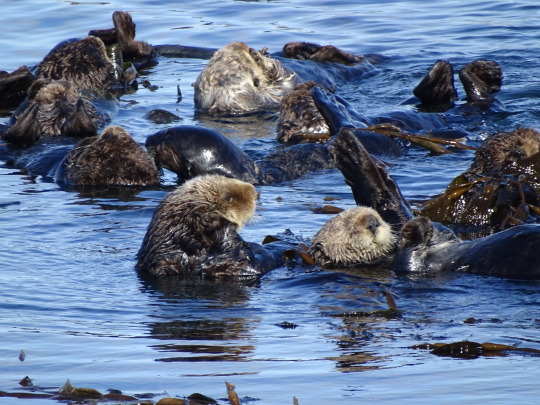
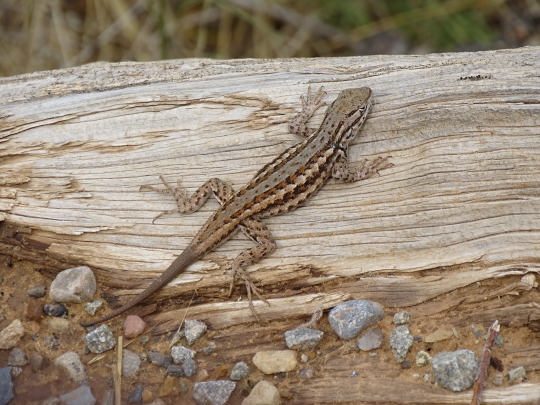
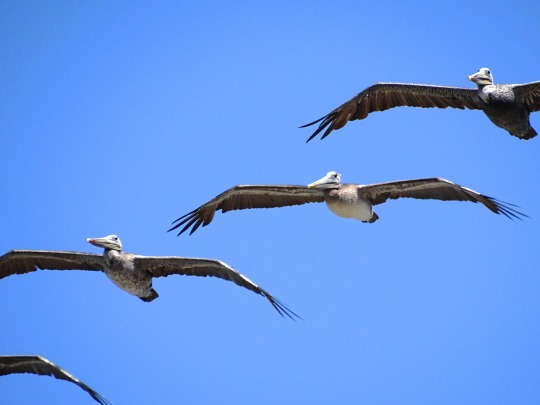
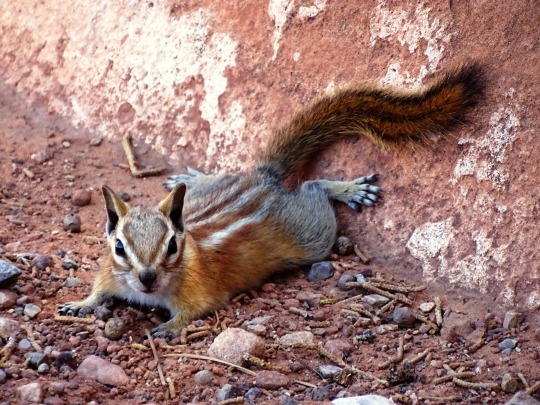
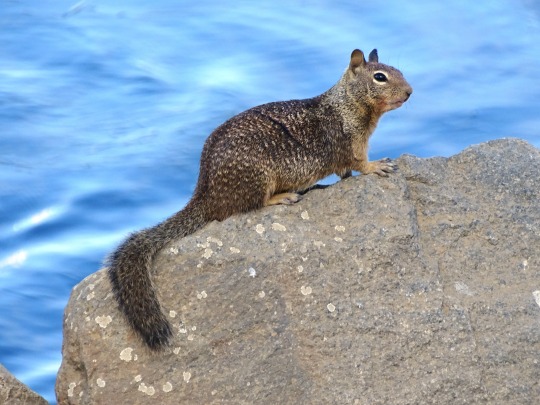
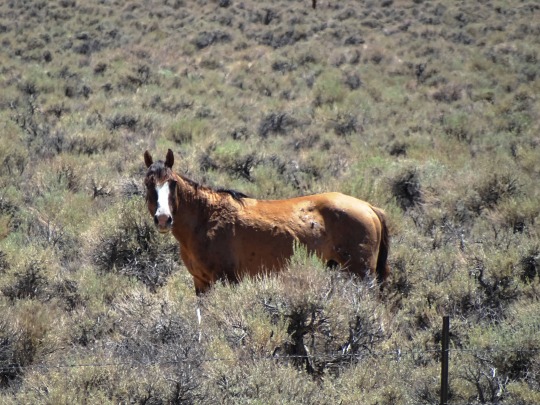

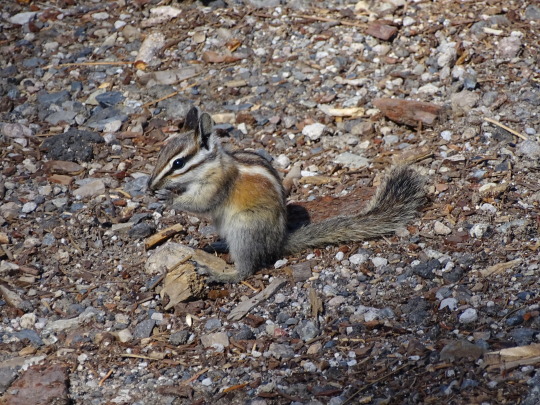
World Wildlife Day
The World is full of amazing creatures from every possible medium. From the birds of the air to the majestic whales of the sea, wildlife abounds in the most unusual and unexpected places. Wildlife benefits us in many ways and has since timed out of mind. World Wildlife Day is a day to remind us of our responsibilities to our world and the lifeforms we share it with.
Even though we might like to think so sometimes, humans aren’t the only living things on Earth. In fact, we’re far outnumbered by other living things, from animals and plants to fungi and bacteria. Wildlife isn’t just something that we passively observe; it’s part of our world, and something we need to care for. World Wildlife Day is your chance to celebrate all wildlife, from the smallest insect to blue whales. No matter what you love about wildlife, you can spend the day taking action to help protect it.
This day is all about raising awareness of wild flora and fauna across the world. Whether you love animals, you’re passionate about plants, or you’re concerned about climate change, it’s the day that you can use to educate yourself or others. You can celebrate the incredible biodiversity across the world and perhaps get out there to explore the huge range of flora and fauna the world has to offer. Celebrating World Wildlife Day is a must for anyone who loves our planet.
History of World Wildlife Day
On March 3rd, 1973 the United Nations General Assembly took a stand to protect Endangered Species throughout the world. Whether plant or animal, the importance of these species in every area of human life, from culinary to medical, could not be understated. At this time hundreds of endangered species were being threatened every year, and extinction was at a staggeringly high rate. CITES was put into place (Convention on International Trade in Endangered Species) to ensure that the world did not continue to hemorrhage species that would never be seen from again.
On December 20th, 2013 another step was taken to help spread awareness of the fragility of endangered species in the world. At its 68th session, the UN declared that each year World Wildlife Day would be dedicated to a new purpose and idea to help keep people abreast of the changing nature of our world, and the treasures we stand to lose from the animal and plant kingdom if we don’t take care.
Sometimes the day highlights an endangered animal or group of animals, while in other years, it has focused on a specific issue affecting the world of wildlife. Previous themes have included getting serious about wildlife crime and listening to young voices. World Wildlife Day is implemented by the CITES Secretariat, working together with relevant UN organizations. The day might not have been around for long compared to some others, but it’s already made a big impact. If you are passionate about the Earth and everything on it, celebrating is a must.
World Wildlife Day Timeline
1900 First wildlife conservation act is passed in the US
The Lacey Game and Wild Birds Preservation and Disposition Act is passed by Congress, which is the first legislation of its kind in the United States.
1948 International Union for Conservation of Nature begins
This is the first effort toward conservation that is supported by governments and societal organizations globally and its purpose is to encourage cooperation and the sharing of resources regarding conservation.
1961 World Wildlife Federation is established
A group of individuals who are passionate about protecting endangered species and places bands together to secure funding to this end.
1973 Convention on International Trade in Endangered Species
Negotiated in Washington DC, CITES is an international agreement between governments to protect the survival of various wild species by ensuring that trade does not threaten them. The signing takes place on March 3.
2013 First World Wildlife Day is celebrated
At its 68th session, the United Nations General Assembly (UNGA) declares March 3 as the day to raise awareness and and celebrate the wild animals all over the world.
How to Celebrate World Wildlife Day
You can celebrate World Wildlife Day on your own or with others, whether you just want to spend some time contemplating the majesty of nature or you want to spread the word about just how amazing the world’s wildlife is and how we can protect it.
The first thing that always comes to mind when we think about World Wildlife Day is heading out to our local zoo or botanical conservatory and reminding ourselves of the vast variety of life our world offers. If you have children, this can be one of the best ways to really introduce them to the wonders of the animal and plant kingdom. If you’re feeling particularly adventurous, an outdoor excursion with a book of local flora and fauna (That’s plants and animals) can help make that connection come even closer to home.
You could also spend the day spreading the word about the importance of our wildlife. If you love our planet, what better way to celebrate everything on it than to encourage other people to care about it too? You might create an event, get people to sponsor you or create some education materials. Choose a cause that matters to you, whether it is a local one or an international wildlife issue that you want to highlight.
Another way you can get involved is finding out what this year’s theme is by stopping by www.wildlifeday.org and finding ways to get involved. The website has a map of events that you can search to discover things to do near you, or you could add your own event to encourage others to get involved too. You can find a range of useful materials on the site too, including posters, logos, a social media kit, and a special action card that you can use to take photos. You can find suggestions for World Wildlife Day hashtags to use on social media or any materials that you create for your event too. Some of their suggestions for getting involved include running a competition, engaging with influencers, celebrities and politicians, and showing your appreciation for those who help to conserve wildlife every day.
There are few things as important as making sure that the world’s biosphere remains healthy, every time we lose a plant or animal, we have no way of knowing if a cure for a disease or some new medical breakthrough was lost with them. World Wildlife Day is your opportunity to do your part in preserving our world.
World Wildlife Day FAQs
Who started World Wildlife Day?
World Wildlife Day was started by the United Nations General Assembly which is the main policy-making sector of the assembly. Over the years it has become the most important annual event dedicated to the preservation of wildlife.
What is World Wildlife Day?
World Wildlife Day offers a simple opportunity to consider the animals and plants that humans share the planet with and to take action to help them in a variety of ways.
How to get involved with World Wildlife Day?
Taking part in World Wildlife day can be simple or more involved. The best ways to stay connected are to learn more, share the need with friends and family members, get to know threats to your local area, and host an awareness day at the office or at school.
Why do we celebrate World Wildlife Day?
The purpose of the celebration of World Wildlife Day is to raise awareness for the plight of and care for wild species that may be at risk and need to be protected.
When did World Wildlife Day start?
Although attention to wildlife has been active for more than 70 years, World Wildlife Day is a fairly modern celebration, officially started by the UN in 2013.
Source
#sea otter#pelican#lizard#California ground squirrel#Morro Bay#California#Monument Valley Navajo Tribal Park#Utah#Arizona#Pacific Ocean#Elephant Seals of San Simeon#Northern elephant seal#Sagebrush lizard#Mesa Verde National Park#Arches National Park#Hopi chipmunk#wild horse#Lodgepole chipmunk#World Wildlife Day#3 March#animal#flora#fauna#summer 2022#original photography#travel#vacation#USA#Colorado#California toad
6 notes
·
View notes
Photo










World Wildlife Conservation Day
The sad truth is that the world’s best loved, beautiful and fascinating species are being slaughtered by widespread and dangerous criminal networks that will stop at nothing to get what they want. And what they want are animal parts and products that for reasons no sane person really understands, are worth lots of money.
There are plenty of synthetic substitutes for things like ivory and fur that don’t require the brutal slaughter of an animal to obtain, not to mention how hard it actually is to tell the difference between high-quality synthetic substitutes and the real thing. And do you mean to tell me no other dish in the world tastes as good as shark fin soup, and that we really have to mutilate live sharks and then throw them back into the ocean to die? Long story short, there is simply no excuse for the amount of animals being poached every year.
And yet they are. In 2011 alone, for example, there were 13 large-scale seizures of ivory, and over 23 tons of ivory confiscated, which is equivalent to at least 2,500 elephants. A 2010 United Nations report suggests that gorillas could disappear altogether from large parts of the Congo Basin by the mid-2020s.
And yet they are. In 2011 alone, for example, there were 13 large-scale seizures of ivory, and over 23 tons of ivory confiscated, which is equivalent to at least 2,500 elephants. A 2010 United Nations report suggests that gorillas could disappear altogether from large parts of the Congo Basin by the mid-2020s.
And it is not just the animals that are suffering. Park rangers get killed on a regular basis by poachers they’re trying to stop, and the local economies of entire towns and villages suffer terrible damage once enough wildlife is wiped out to make them irrelevant as wildlife tourism destinations. Corruption and intimidation are weakening law enforcement efforts. Unscreened wildlife and wildlife parts increase the risk of human health pandemics such as bird flu. Everyone involved is suffering.
History of World Wildlife Conservation Day
A call to action was put out by Secretary of State Hillary Clinton in 2012 to raise awareness and engage conservationists on Wildlife Conservation Day, December 4.
During the “Wildlife Trafficking and Conservation: A Call to Action” event held at the State Department on November 8th 2012, Secretary Clinton outlined the White House’s strategy to address the global problem of wildlife trafficking. These efforts are estimated to cost between $7 and $10 billion dollars a year.
“Wildlife cannot be manufactured. And once it’s gone, it cannot be replenished. Those who profit from it illegally are not just undermining our borders and our economies, they are truly stealing from the next generation,” she said.
How to Celebrate World Wildlife Conservation Day
Raise awareness and contribute to the conservation and protection of endangered species such as elephants, rhinos and tigers on World Wildlife Conservation Day’s website.
This global occasion provides everyone with the opportunity to learn more about wildlife conservation and to be part of the solution to wildlife crime. Go online and join the thousands of other individuals who have taken the wildlife pledge.
Promise to learn more about wildlife conservation, to spread the word about the importance of protecting our plane’ts most endangered species and the impact of poaching on our environment. Learn how to become a responsible consumer in order to stop illicit wildlife trade.
You can also take direct action by making a charitable donation to the World Wildlife Fund (WWF). 100% of all donations go towards training and equipping the rangers who are the wildlife protectors, and often the only thing standing between a baby tiger or elephant and a poacher.
Source
#Hopi chipmunk#lizard#Sagebrush lizard#wild horse#Lodgepole chipmunk#California ground squirrel#sea otter#Pacific Ocean#Morro Bay#vacation#Yosemite National Park#Monument Valley Navajo Tribal Park#Mesa Verde National Park#Arches National Park#Northern elephant seal#pelican#California toad#original photography#summer 2022#travel#USA#World Wildlife Conservation Day#4 December#WorldWildlifeConservationDay
4 notes
·
View notes